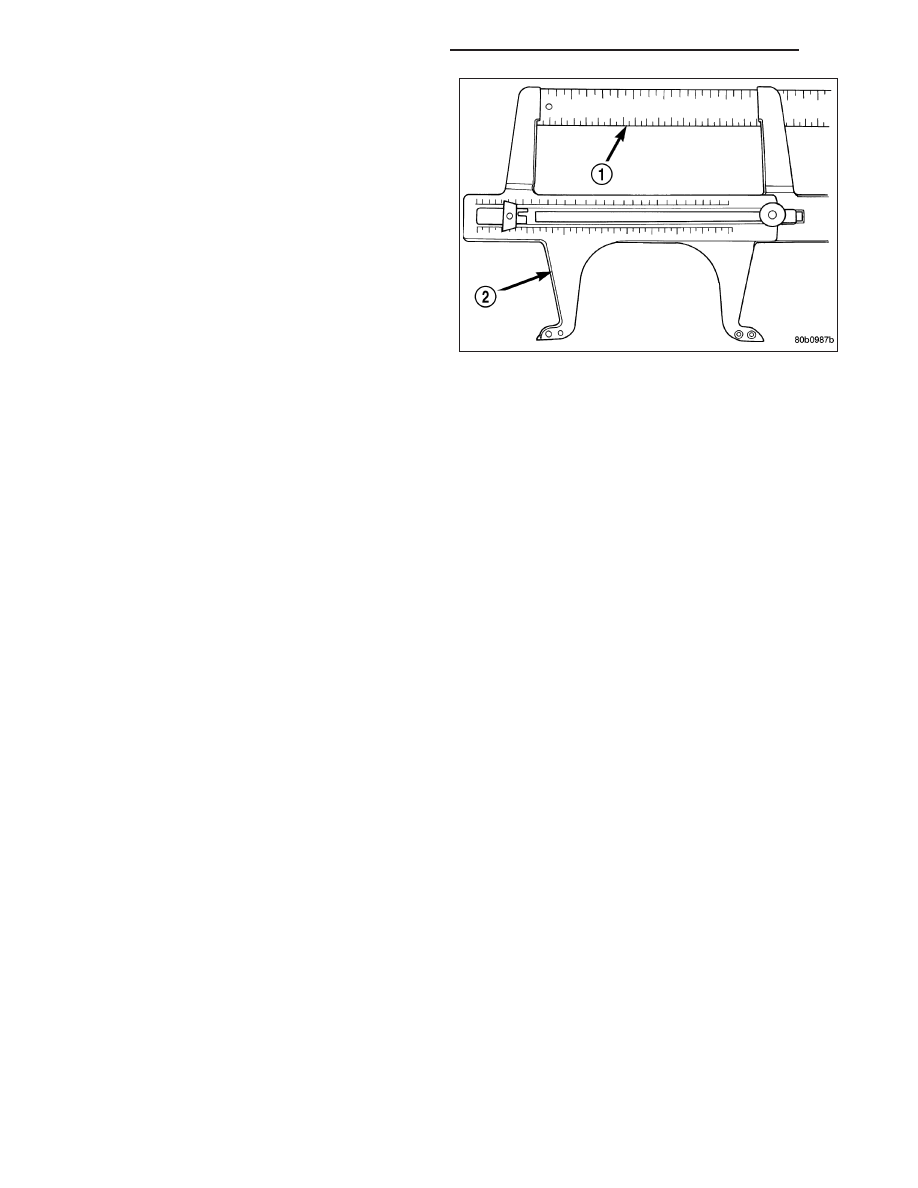Jeep Grand Cherokee WK. Manual - part 115

7. Reduce the inside diameter measurement of the
brake drum that was taken using Special Tool
C-3919 (2) by 1/64 of an inch. Reset Gauge, Brake
Shoe, Special Tool C-3919 (2) or the equivalent
used, so that the outside measurement jaws are
set to the reduced measurement.
8. Place Gauge, Brake Shoe, Special Tool C-3919 (2)
, or equivalent over the park brake shoes. The spe-
cial tool must be located diagonally across at the
top of one shoe and bottom of opposite shoe (wid-
est point) of the park brake shoes.
9. Using the star wheel adjuster, adjust the park brake
shoes until the lining on the park brake shoes just
touches the jaws on the special tool.
10. Repeat step 8 above and measure shoes in both
directions.
11. Install brake rotor on the axleshaft (Refer to 5 - BRAKES/HYDRAULIC/MECHANICAL/ROTORS - INSTALLA-
TION).
12. Rotate rotor to verify that the park brake shoes are not dragging on the brake drum. If park brake shoes are
dragging, remove rotor and back off star wheel adjuster one notch and recheck for brake shoe drag against
drum. Continue with the previous step until brake shoes are not dragging on brake drum.
13. Install disc brake caliper on caliper adapter (Refer to 5 - BRAKES/HYDRAULIC/MECHANICAL/DISC BRAKE
CALIPERS - INSTALLATION).
14. Install wheel and tire.
15. Tighten the wheel mounting nuts in the proper sequence until all nuts are torqued to half the specified torque.
Then repeat the tightening sequence to the full specified torque of 129 N·m (95 ft. lbs.).
16. Lower vehicle.
CAUTION: Before moving vehicle, pump brake pedal several times to ensure the vehicle has a firm enough
pedal to stop the vehicle.
NOTE: After parking brake lining replacement, it is recommended that the parking brake system be condi-
tioned prior to use. This is done by making one stop from 25 mph on dry pavement or concrete using light
to moderate force on the parking brake hand lever.
17. Road test the vehicle to ensure proper function of the vehicle’s brake system.
ADJUSTMENT - WITH ADJUSTING TOOL
Adjustment can be made with a standard brake gauge or with adjusting tool. Adjustment is performed with the com-
plete brake assembly installed on the backing plate.
1. Be sure parking brake lever is fully released.
2. Raise vehicle so rear wheels can be rotated freely.
3. Remove plug from each access hole in brake support plates.
4. Loosen parking brake cable adjustment nut until there is slack in front cable.
5. Insert adjusting tool through support plate access hole and engage tool in teeth of adjusting screw star wheel.
5 - 86
BRAKES - BASE - SERVICE INFORMATION
WK